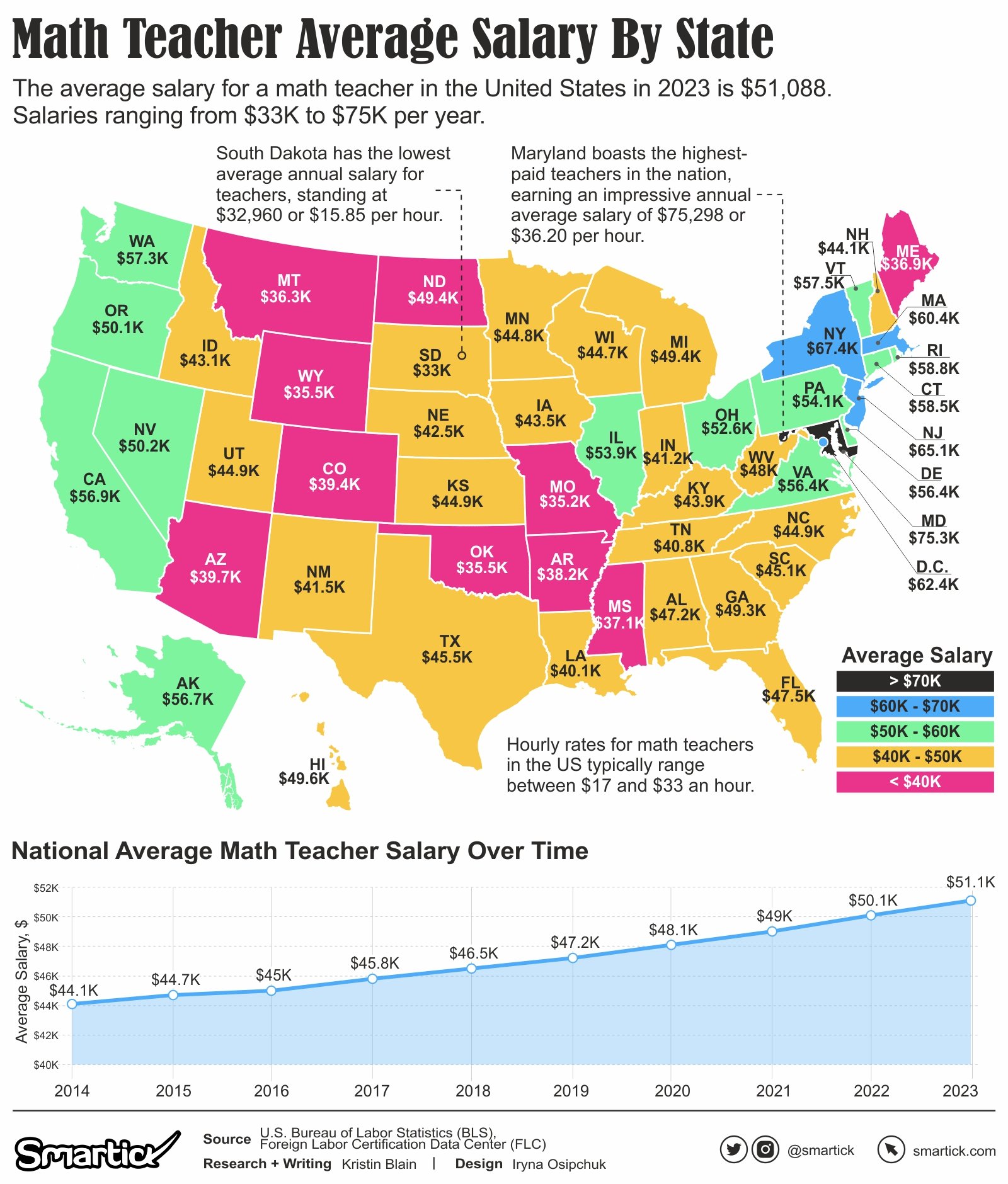
Mathematics serves as a cornerstone for intellectual development and holds significant importance within the realm of education. Behind the scenes, dedicated math teachers tirelessly impart their knowledge to students, but the question of their compensation remains. In this article, we delve into an extensive examination of math teacher salaries in the United States, utilizing data from reputable sources such as the U.S. Bureau of Labor Statistics (BLS) and the Foreign Labor Certification Data Center (FLC).

HIGHEST PAYING STATES FOR MATH TEACHERS
To gain a comprehensive understanding of the variation in math teacher salaries across the United States, a meticulous analysis of the data is crucial.
Key Highlights
- Maryland tops the list with the highest average salary for math teachers at $75,298, followed by New Jersey and New York.
- Missouri and South Dakota have the lowest average salaries at $35,239 and $32,960, respectively.
- Math teacher salaries have shown a positive trend over time, with an increase from $44,100 in 2014 to $51,100 in 2023.
- The hourly rate for math teachers ranges from $15.85 to $36.20, reflecting the disparities in compensation across states.
- Geographic location, state budgets, and the cost of living play a significant role in determining math teachers’ salaries.
According to the latest available data, Maryland emerges at the forefront, boasting the highest average salary of $75,298, followed closely by New Jersey at $65,143, and New York at $67,401. Conversely, Missouri finds itself at the lower end of the spectrum, with an average salary of $35,239, accompanied by South Dakota at $32,960. Evidently, compensation varies significantly depending on the state of employment, owing to diverse factors such as the cost of living, demand for teachers, and state budgets.
Average Math Teacher Salary Over Time
Examining the progression of math teacher salaries over time unravels valuable insights into trends and fluctuations in compensation. From the available data, a gradual increase in average salaries becomes apparent between 2014 and 2023. In 2014, the average salary stood at $44,100, whereas by 2023, it had risen to $51,100. This upward trajectory signifies a positive trend, indicating that math teachers’ salaries have witnessed growth over the past decade. It is crucial to note that these figures are inflation-adjusted and reported in constant 2023 dollars.
The data strongly suggests that the value attributed to math teachers’ expertise has amplified over time, possibly reflecting the recognition of their pivotal role in preparing students for an increasingly math-oriented world.
Math teachers undeniably hold indispensable roles within the education system, providing students with essential skills and knowledge necessary for success in various fields. The exploration of math teacher salaries in the United States through data analysis reveals substantial variation in compensation across different states, highlighting the influence of factors such as geographic location and regional economies. However, amidst this diversity, a promising trend emerges—a gradual increase in salaries over time, signifying a growing recognition of the significance of math education and the inherent value of math teachers’ expertise. To sustain this positive trajectory, it is imperative to advocate for competitive salaries and appropriate compensation for math teachers, ensuring the continual attraction and retention of highly qualified professionals in this critical field.
In conclusion, while math teachers encounter varying salary landscapes depending on their geographic context, the data portrays an optimistic outlook in terms of compensation. By acknowledging the importance of math teachers’ contributions and striving for equitable remuneration across states, we can bolster the continual advancement and enhancement of quality math education throughout the United States.

